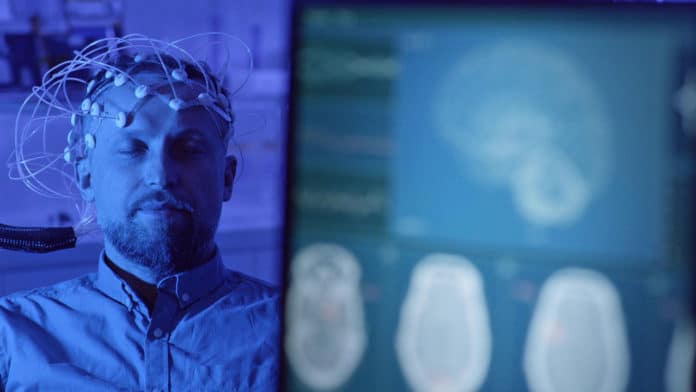Schizophrenia is a heterogeneous disease strongly determined by genetics. However, no strong genetic correlates have been found yet.
The disorder rather stems from many different DNA mutations, duplications, and deletions that cause the developing brain to go awry. Hence, predicting who’s at risk of developing schizophrenia is no simple task.
For this reason, endophenotypes are of significant interest. Endophenotypes are associated with the illness, state-independent, co-segregate within families, and found in unaffected relatives of individuals with the disorder at a higher prevalence than in the general population.
Co-senior author Michael Herzog, head of the Psychophysics Laboratory at EPFL School of Life Sciences, said, “Because genetic studies yield slow clues into dozens of genes associated with schizophrenia, the disorder should be dissected into measurable traits found in both individuals with schizophrenia and unaffected members of their families. These quantifiable traits, called endophenotypes, connect the symptoms of a disorder to the underlying genetic risk factors.”
Scientists started looking for endophenotypes of schizophrenia by analyzing the brain patterns of 101 people with schizophrenia, 43 of their unaffected siblings, and 75 healthy individuals who reported no family history of schizophrenia.
Scientists scanned participant’s brains using resting-state electroencephalography (EEG). This non-invasive technique measures the brain’s electrical activity via electrodes attached to the scalp of individuals as they relax and sit still for about five minutes.
Once collecting EEG data, scientists tracked specific patterns of neuronal activity that have been described as the building blocks of cognition and emotion. Dubbed “EEG microstates,” these patterns last between 60 and 120 milliseconds and arise when specific brain areas activate together.
Unlike the previous study that shows individuals with schizophrenia have abnormal EEG microstates, this study has shown that unaffected siblings share the same abnormalities in these brain patterns.
In particular, scientists found a specific type of microstate, called class C, occurred more frequently and for longer durations in individuals with schizophrenia and their siblings than it did in healthy people. Other brain activity patterns, known as microstate class D, occurred less frequently and for shorter amounts of time in those with schizophrenia and their siblings than in healthy individuals.
Also, Ramos da Cruz said, “What’s more, people who had just experienced their first episode of psychosis showed the same anomalous patterns of brain activity as those who had been suffering from schizophrenia for years. This suggests that these microstate abnormalities occur right at the beginning of the disease.”
“The team also found that a third type of microstate, called class B, occurred more frequently and for longer periods in siblings than in individuals with schizophrenia. This might explain why healthy siblings do not show schizophrenia-related behaviors, despite sharing the same brain ‘signature’ as people with the disorder. This could be a protection mechanism that prevents the imbalance in microstates class C and D from creating functional problems.”
“How the alterations in EEG microstates affect brain function is still unclear. But for diagnostic purposes, you don’t need to know that. Looking for abnormal patterns in brain waves could be one component of a screening battery for schizophrenia, and it could help to detect who is susceptible to the disorder before clinical symptoms develop.”
Herzog said, “In the future, EEG microstates could even inform treatment and prevention strategies for this neuropsychiatric disorder. Knowing how the microstates contribute to schizophrenia could lead to personalized treatments using techniques that modulate brain activity patterns. If we can improve even just the symptoms by a small factor, that would still be a major relief for the patients.”
Journal Reference:
- Janir Ramos da Cruz, Ophélie Favrod, Maya Roinishvili, Eka Chkonia, Andreas Brand, Christine Mohr, Patrícia Figueiredo & Michael H. Herzog. EEG microstates are a candidate endophenotype for schizophrenia. DOI: 10.1038/s41467-020-16914-1
